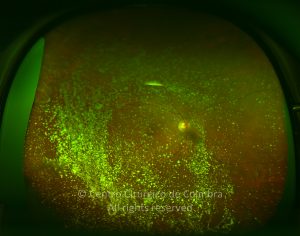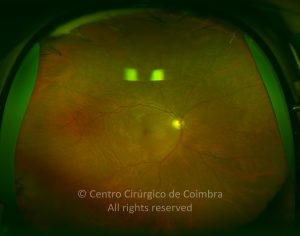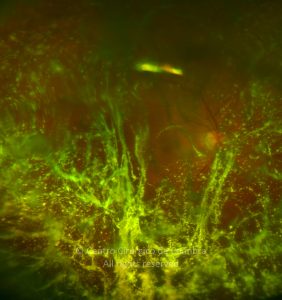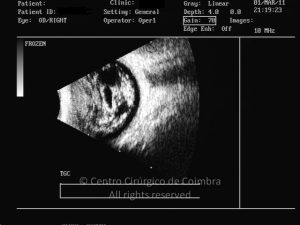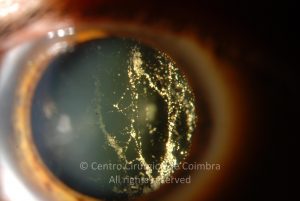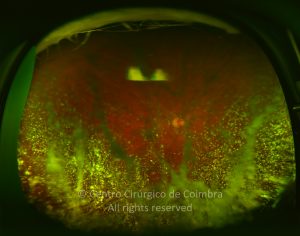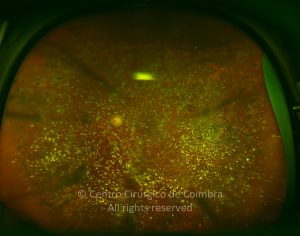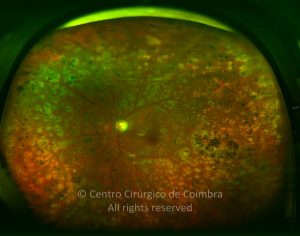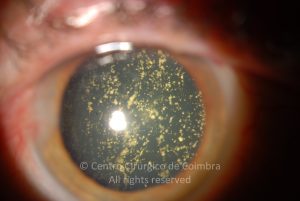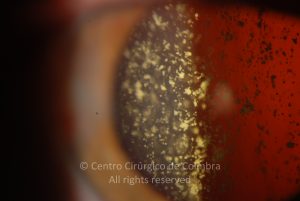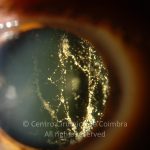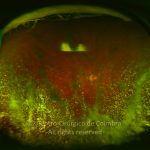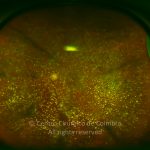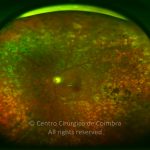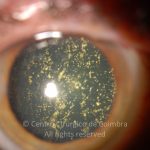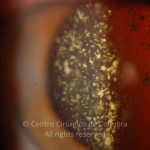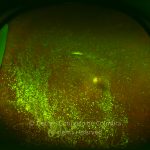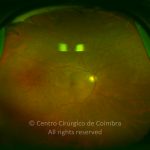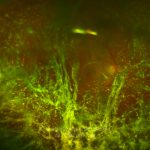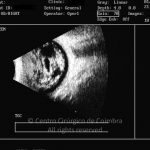Asteroid hyalosis (Benson’s disease) is a benign condition characterized by multiple-yellow-white, round, birefringent particles composed mainly of calcium-phosphate attached to the vitreous. The incidence has been estimated to be 0.5%.
The cause of asteroid hyalosis is unknown, but it has been associated with hyperopia, diabetes mellitus, hypertension and hypercholesterolemia.
Clinically the asteroid bodies remain attached to the vitreous’ collagenous framework, moving only when this network oscillates. They appear golden under retroillumination and white under direct illumination. This pathology is usually unilateral (75%) and found in elderly patients over 60 years of age.
Retinography is sometimes difficult in these patients due to the numerous flash reflections originating from the hyaloid bodies. Fluorescein angiography allows a better visualization of the retina in difficult cases. In ultrasonography these vitreous bodies appear as hypereflective deposits in the vitreous cavity and may increase the difficulty of obtaining a reliable axial length measurement.
Asteroid hyalosis rarely affects the patient’s visual acuity, even in cases of severe vitreous involvement. In these cases vitrectomy is indicated.
Differential Diagnosis
- Amyloidosis
- Cholesterolosis
References
Basic and Clinical Science Course – 2011-2012 – Section 12 – Retina and Vitreous, American Academy of Opthalmology
Bergren RL, Brown Ge. Duker JS. Prevalence and association of asteroid hyalosis with systemic diseases. Am J Ophthalmol. 1991;111 :289- 293
Fawzi AA, Vo B, Kriwanek R, Ramkumar HL, et al, Asteroid hyalosis in an autopsy population: The University of California at Los Angeles (UCLA) experience. Arch Ophthalmol. 2005 Apr;123(4):486-90





